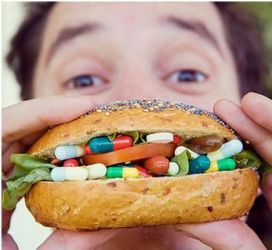 If you’re faithfully taking your daily multi-vitamin, you should be proud of yourself. You’re doing a good thing for your body and your overall health, right? Unfortunately, you may not be helping yourself as much as you think.
If you’re faithfully taking your daily multi-vitamin, you should be proud of yourself. You’re doing a good thing for your body and your overall health, right? Unfortunately, you may not be helping yourself as much as you think.
A recent MSNBC article reported that many of the vitamins and supplements on the shelf are not as nutritious as they claim and, in some cases, they are more potent than they claim.
The FDA has strict guidelines and regulations for prescription drugs, however there is not process for regulating vitamins and supplements. The only testing on these products is done independently. ConsumerLab.com and its researchers conducted a test on 38 multi-vitamins and published their findings this week. The tests concluded that eight products contained too few of the specific nutrients, two contained more nutrients than the label stated, and three simply had improper labeling.
Besides these statistics being frustrating, they could mean harm to their users. Too few of a nutrient can have negative effects, but the real worrisome issue is that some products have too much of a nutrient. Too much of a nutrient like vitamin A can be toxic to one’s liver.
Perhaps one of the most bothersome findings was that in a children’s vitamin. High levels of particular nutrients in a child could lead to liver abnormalities, bone weakening, and even nervous system issues.
While these facts are concerning, the article states that this is a typical finding among similar tests. Does this mean there is no way to get all the vitamins our bodyies need without taking a risk on the product we buy? No, not at all. Multi-vitamins were created as a means to get nutrition without consuming it from the source. However, getting nutrition from the foods you eat is the best way to ensure you’re getting what your body needs.
Some of the top nutrients in vitamins are calcium, iron, folic acid, vitamin A, and zinc. These can be found in many great foods.
Calcium can naturally be found in dairy products like milk, cheese, or yogurt. Also dark leafy greens like broccoli or kale are high in calcium. To get enough iron, red meat, beans, lentils, and chick peas are all great options. Egg yolk are also high in iron as well as those dark leafy greens again.
Folic acid is in so many foods, there’s no excuse for not getting enough. It can be found beans, broccoli, spinach, asparagus, cabbage, and corn and there are also several fruits. Strawberries, oranges, and bananas are delicious sources of the essential vitamin.
Vitamin A is present in many wonderful foods as well. Sweet potatoes, carrots, mangoes, and cantaloupe are great sources of vitamin A. To ensure proper zinc intake, one should include almonds, fish, or tomatoes in their diet. Kiwi, olives, and oysters are also high in zinc.
Since it appears that no major regulation changes are scheduled to take place regarding the content of multi-vitamins, it’s good to know there are plenty of great choices. An informed diet can be high in the nutrients the body needs.
Also Read:
